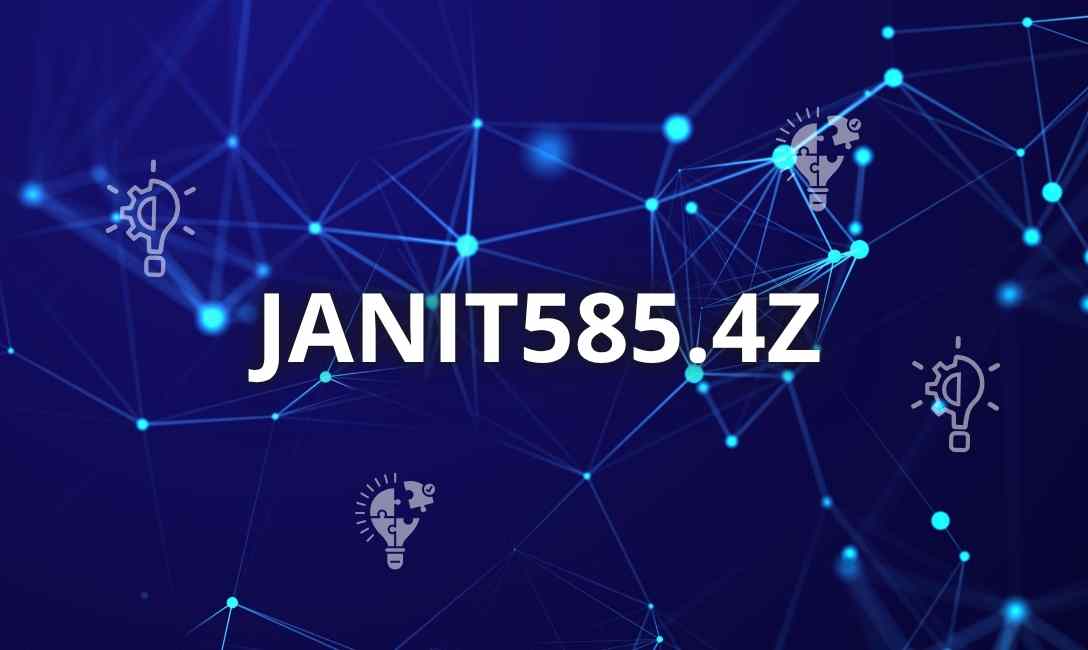Introduction
In a rapidly evolving digital landscape, Janit585.4z has emerged as a topic of heated debate. Some call it a powerful automation tool revolutionizing workflows, while others warn of its potential as malware disguised in a novel file format. In this article, we’ll unpack what Janit585.4z is, explore its features and uses, assess the safety concerns, and provide practical guidance for both adopting and defending against it.
What Is Janit585.4z?
As a Productivity Technology
According to technology blogs, Janit585.4z refers to an advanced automation tool or file format designed to perform high‑speed, efficient data processing. It’s praised for streamlining repetitive tasks, improving data handling speeds, and enabling consistent results—attributes ideal for tech-intensive environments like software development, data analytics, and back‑office automation.
The suffix “.4z” suggests a specialized compression or scripting format capable of running automated routines, though official technical documentation remains scarce.
As a Potential Malware Threat
Conversely, security-focused websites have flagged Janit585.4z as a suspicious—or even malicious—file type. It’s alleged to:
- Infect systems via phishing emails or bundled downloads
- Encrypt files using 256-bit AES algorithms and rename them with “.janit585”
- Disable system restore mechanisms
- Delete backups (shadow copies)
- Modify registry entries for persistence
- Communicate with remote servers and evade detection
This dual narrative places Janit585.4z at the intersection of innovation and threat.
Features & Capabilities
Performance and Automation
Proponents laud Janit585.4z for its ability to automate repetitive tasks: from organizing data files to generating reports at high speeds. Reports claim compression ratios as high as 75%, purportedly doubling as a performance-optimized storage format without sacrificing data integrity
Security Measures
Supporters say the “.4z” format includes built‑in encryption and integrity checks, offering privacy and resilience during data transfer. However, the claimed 256‑bit AES encryption, in unvalidated formats, may warrant scrutiny.
Real-world Applications
Workflow Integration
Ideal for large-scale automation—loading datasets, compressing archives, batching SQL queries, or internal data processing pipelines.
Enterprise Data Management
The format’s compression efficiency and encryption suggest suitability for enterprises managing sensitive data across systems, backups, and logistics.
Software Distribution
Could function as a container for deploying software updates or configurations—assuming strong verification and validation mechanisms exist.
Safety Concerns & Risks
With power comes risk. Here’s what the security community is warning about:
Malware and Ransomware Risks
Janit585.4z disguises itself as a legitimate utility but may be a ransomware vector:
- Encrypts and locks user files
- Deletes system recovery
- Alters system settings for persistence
Exploitation of Novel File Format
New extensions (like “.4z”) are common malware tools. Without transparent documentation and trusted publishers, these file types are inherently risky .
Source Integrity
The origins and maintainers of Janit585.4z remain unknown. Lack of official sources is a major red flag in cybersecurity
Resolving the Dual Narrative
The split perspectives likely arise from ambiguity in Janit585.4z’s identity:
- If legitimate, it’s a high-performance automation/compression format with specialized uses.
- If malicious, it’s yet another disguised threat taking advantage of obscure file formats.
Both scenarios hinge on transparency, trust, and clear documentation.
Safety Guide: How to Handle Janit585.4z
Verification & Source Trust
- Only download from reputable channels or verified vendors.
- Check digital signatures or SHA-256 hashes when available.
- Avoid sources like phishing emails, P2P sites, or unvetted forums.
Sandboxing & Testing
- Analyze the tool in virtual machines or isolated containers.
- Monitor CPU, RAM, network, and file-system activity for unauthorized behavior.
Keep Security Tools Updated
- Ensure anti-malware and endpoint protection are current.
- Scan any suspicious “.4z” files before opening.
Principle of Least Privilege
- Execute tools with minimal system permissions.
- Avoid running on admin accounts or sharing credentials.
Employee Awareness
- Train staff to:
- Identify suspicious attachments or sources
- Report anomalies quickly
- Avoid software installation from untrusted channels
Backup and Recovery
- Regularly back up critical data off‑site and offline.
- Enable and secure system snapshots or volume shadow copies.
- Test recovery processes routinely.
Use Monitoring Tools
- Implement activity logs for file changes, registry edits, and network traffic.
- Set up alerts for high-risk behaviors—like encryption or system utilities being disabled.
Expert Insights & Future Directions
| Feature / Behavior | Productivity Tool | Malware / Ransomware |
| Compression & speed | ✅ Up to 75% | ❌ N/A |
| Automation potential | ✅ Yes | ❌ No |
| AES encryption of user files | ❌ | ✅ Yes |
| System and registry changes | ❌ | ✅ Yes |
| Shadow copy deletion | ❌ | ✅ Yes |
| C&C server communication | ❌ | ✅ Yes |
| Phishing/malvertising use | ❌ | ✅ Yes |
Unknown Source = Unknown Risk
No known vendor or authority officially describes Janit585.4z. In tech and security, layers of visibility are essential. The lack of it should raise red flags.
Dual-Use Risk
Innovation and malware often share traits. For a file format to be safe, it must be accompanied by:
- Transparent documentation
- Open specification
- Community trust built through peer review
Janit585.4z has yet to meet these criteria.
Call for Community Accountability
If it’s genuinely beneficial:
- Provide a specification document
- Release open-source tools or APIs
- Seek third-party audits and certifications
These actions could balance innovation with trust.
Conclusion & Best Practices
| Scenario | Key Takeaway |
| You want to use it | Apply extreme caution. Ensure it comes from a trusted vendor; test in secure, isolated environments; employ comprehensive system protections. |
| You suspect a threat | Block unknown “.4z” files; increase scrutiny; share samples with your cybersecurity provider for analysis. |
At present, Janit585.4z remains deeply ambiguous — part potential productivity boon, part unknown risk. Until it gains greater transparency or trust, treat it as an unverified entity.
Pro Tips for Businesses & Tech Teams
- Define a Whitelist Approach: Only accept file formats from trusted vendors.
- Formal Security Vetting: Test new formats in sandbox environments.
- Incident Readiness: Ensure backups are valid and regularly verified.
- Continuous Education: Keep teams updated about new threats and protocols.
By combining caution, cybersecurity hygiene, and proactive vetting, organizations can both harness innovation and guard against emerging threats.
Final Word
Janit585.4z symbolizes both the promise and peril of modern file formats. Whether it’s a breakthrough or a trap, the onus is on vendors to build trust—and on users to demand it.
Key takeaways:
- The claims: high-performance automation tools, powerful compression, and encryption.
- The risks: ransomware-style behavior and malware masquerading as legitimate.
- The solution: thorough testing, strong security posture, and educated judgment.




